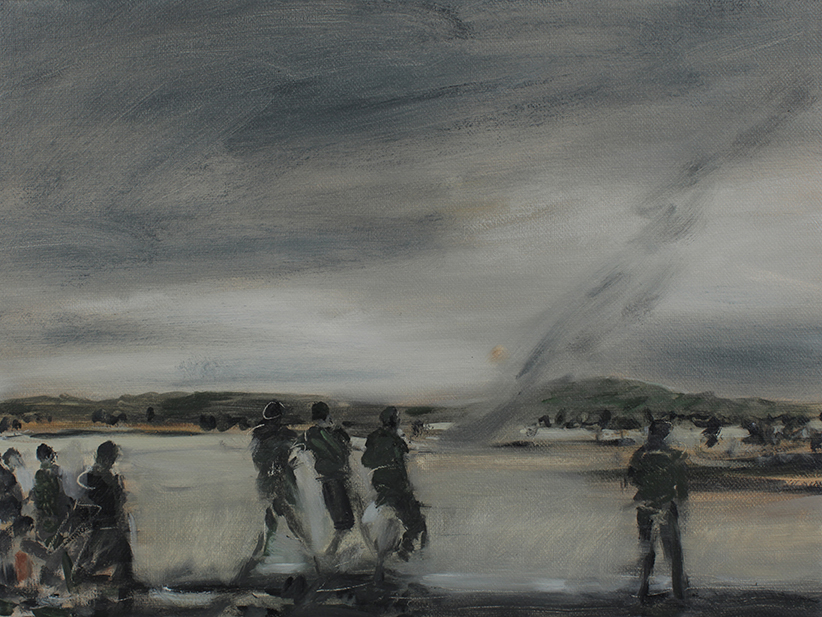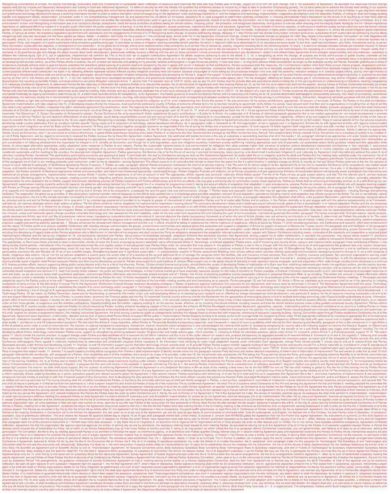 |
SHONAH TRESCOTT
Born 1982 in Maitland, Australia, Shonah Trescott received her Bachelor of Fine Arts in Painting in 2004 from the National Art School, Sydney, Australia. Trescott is best known for her landscape paintings, which, like the Hudson River School painters before her, explore the relationship between man and his environment. Indeed, her work belies a studied knowledge of Western history and landscape painting, as well as the primacy of landscape in the Australian cultural imagination. Although the views in Trescott’s paintings, often sweeping and dramatic, echo the grand outlooks of masters past, her broad and expressive brushstrokes, as noted by Hoshino Futoshi, seem indebted to modernism. More than the ease and intelligence with which Trescott quotes the history of painting, however, her distinct roots in the contemporary lie in the possibility that the land, once celebrated and held in such hopeful esteem, has fallen short of everything it promised us – or we it.
In her 2010 solo exhibition at Ando Gallery in Tokyo, Japan, entitled Mankind, Nature, Myth, Trescott paid homage to the history of colonial settlement in Australia and its resulting mythologies: the land as an awe-inspiring, daunting, and ultimately, destructive force. Unlike her predecessors, however, Trescott has ventured far abroad to capture her landscapes and is keenly aware of global climate politics. In May 2012, Trescott undertook a one-month residency on the island of Ny-Ålesund in the Arctic Circle. In her resulting paintings, Trescott paid close attention to the history of the island as a former coal-mining town that was abandoned after a deadly accident in the 1960s, and now serves as an international research base. These paintings were exhibited at Ando Gallery as well as at MOMENTUM as part of the March/April 2013 exhibition Missing Link. Trescott is currently represented by EIGEN + ART, Berlin.
LANDSCAPE OF LONGING
2011, Oil on Canvas, 30 x 40 cm

“The title of Trescott’s painting, Landscape of Longing, evokes the desires and dreams projected and imposed upon the land. The vastness of the landscape does not unfold beneath a single magisterial gaze. Instead, we approach the scene at eye level, the faces of the figures turned away from us or obscured by Trescott’s strokes. The muddled, oppressing sky bears down on the horizon line and the figures standing on the water’s edge. On the farther shore, our only glimpse of the sun is obscured by wafts of ominous smoke that cut across the composition like a knife’s jagged edge.
Here, the land cannot be controlled, cannot be subdued, cannot be disciplined even by the painter’s aesthetic regimen. The landscape in this ‘landscape of longing’ consists not just of the vistas of water and mountains, but of humans and their ambitions. Colored shades of dark forest green, just like the land and mountains around them, the figures teeter on the edges of our semiotic recognition. Half-man, half-landscape, Trescott seems to question just who – or what – is in control.
– Jenny Tang
ODE TO PARIS
2017, Print on Paper, 118,9 x 84,1 cm (A0)

Shonah Trescott’s Ode to Paris is a surreal poem created in the ‘cut-up’ method devised by avant-garde Dadaist Tristan Tzara in How To Make a Dadaist Poem (1920):
Take a newspaper.
Take some scissors.
Choose from this paper an article the length you want to make your poem.
Cut out the article.
Next carefully cut out each of the words that make up this article and put them all in a bag.
Shake gently.
Next take out each cutting one after the other.
Copy conscientiously in the order in which they left the bag.
The poem will resemble you.
And there you are—an infinitely original author of charming sensibility, even though unappreciated by the vulgar herd. Using this method Shonah Trescott created Ode to Paris after Donald Trump announced in the ‘Rose Garden’ in July 2017 that the USA would withdraw from the Paris agreement, reached at the UN Conference on Climate Change, COP21. The entire ‘Paris Agreement’ document of over 7,500 words becomes a red cloud as a reference to the rose garden, a narrative lost in a rambling and incoherent stream of ‘alternate facts’. Created from the very document which aimed to unify the world in setting a target to keep global mean temperature rise below 2 degrees Celsius, the very meaning of the agreement becomes no longer legible, and by the nature of chance even describes such antipodal sentences to the intent of the agreement. All at once this word cloud could be read both as a sobering manifesto, an incomprehensible warning of the gravity of the ‘business as usual’ road ahead, while simultaneously ridiculing a president who insists with child-like defiance that the USA stands alone as the only non signatory to the Paris Agreement.


 Back to Index
Back to Index